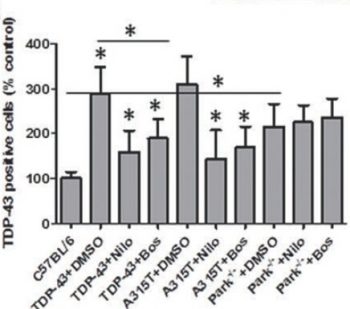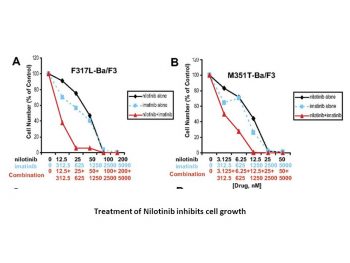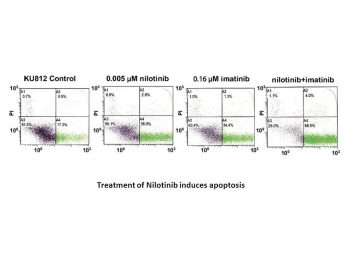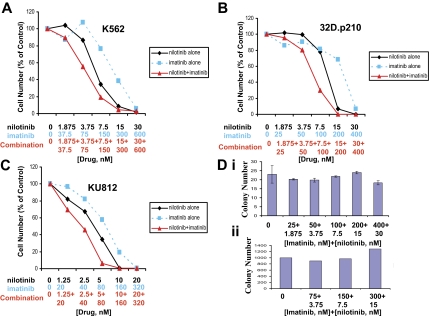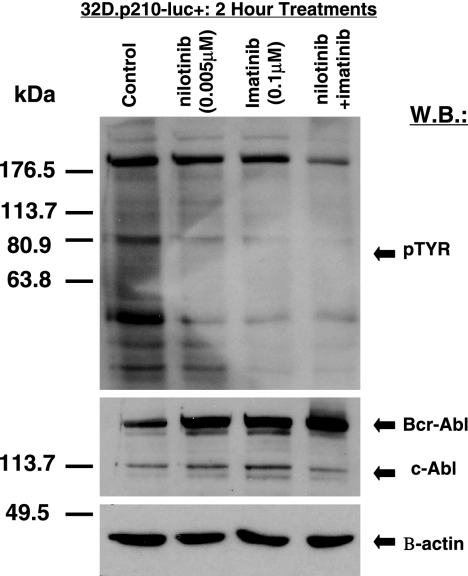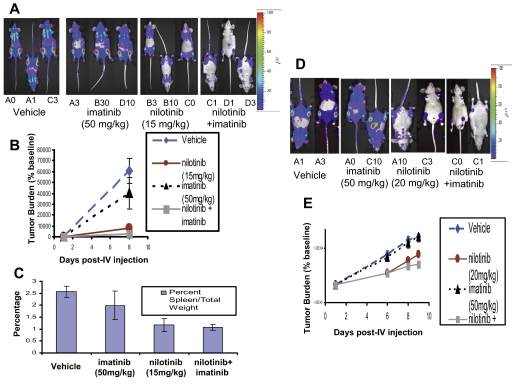This product is for research use only, not for human use. We do not sell to patients.

| Size | Price | Stock |
|---|---|---|
| 2g | $360 | Check With Us |
| 5g | $710 | Check With Us |
| 10g | $1050 | Check With Us |
Cat #: V0671 CAS #: 641571-10-0 Purity ≥ 98%
Description: Nilotinib (formerly also known as AMN-107, AMN107; trade name Tasigna) is a potent, orally bioavailable aminopyrimidine-based Bcr-Abl inhibitor with antineoplastic activity. It inhibits Bcr-Abl with an IC50 of<30 nM in Murine myeloid progenitor cells. As of 2007, nilotinib was approved by the US FDA for the treatment of imatinib-resistant chronic myelogenous leukemia which has the Philadelphia chromosome. Nilotinib was designed based on the structure of imatinib and showed the superiority over imatinib in newly diagnosed or imatinib-resistant chronic myelogenous leukemia (CML). It was more potent than imatinib to wild-type BCR-ABL in a wide range of CML-derived and transfected cell lines. Nilotinib was also efficacious in gastrointestinal stromal tumors.
References: [1]. Weisberg E, et al. Beneficial effects of combining nilotinib and imatinib in preclinical models of BCR-ABL+ leukemias. Blood. 2007 Mar 1;109(5):2112-20.
Publications Citing InvivoChem Products
Product Promise

- Physicochemical and Storage Information
- Protocol
- Related Biological Data
- Stock Solution Preparation
- Quality Control Documentation
| Molecular Weight (MW) | 529.52 |
|---|---|
| Molecular Formula | C28H22F3N7O |
| CAS No. | 641571-10-0 |
| Storage | -20℃ for 3 years in powder formr |
| -80℃ for 2 years in solvent | |
| Solubility In Vitro | DMSO: 27 mg/mL (51.0 mM)r |
| Water: <1 mg/mLr | |
| Ethanol: <1 mg/mL | |
| Solubility In Vivo | 4% DMSO+30% PEG 300+5% Tween 80+ddH2O: 3 mg/mL |
| SMILES Code | O=C(NC1=CC(C(F)(F)F)=CC(N2C=C(C)N=C2)=C1)C3=CC=C(C)C(NC4=NC=CC(C5=CC=CN=C5)=N4)=C3 |
| Synonyms | Nilotinib free base; AMN 107; AMN107; AMN-107; Nilotinib; US brand name: Tasigna |
| Protocol | In Vitro | In vitro activity: Nilotinib inhibits proliferation, migration, and actin filament formation, as well as the expression of α-SMA and collagen in activated HSCs. Nilotinib induces apoptosis of HSCs, which is correlated with reduced bcl-2 expression, increases p53 expression, cleavage of PARP, as well as increases expression of PPARγ and TRAIL-R. Nilotinib also induces cell cycle arrest, accompanied by increased expression of p27 and downregulation of cyclin D1. Interestingly, Nilotinib not only inhibits activation of PDGFR, but also TGFRII through Src. Nilotinib significantly inhibits PDGF and TGFβ-simulated phosphorylation of ERK and Akt. Furthermore, PDGF- and TGFβ-activated phosphorylated form(s) of Abl in human HSCs are inhibited by Nilotinib. Nilotinib inhibits most imatinib-resistant Bcr-Abl mutations, except for T315I. Nilotinib inhibits PDGF-DD-mediated ERK1/2 activation, basal and PDGF-DD-mediated activation of PDGFRβ and Akt, and schwannoma proliferation. Nilotinib is more potent than imatinib, exerting its maximal inhibitory effect at concentrations lower than steady-state trough plasma levels. Nilotinib also significantly reduces the expression levels of the genes for TGF-β1 and platelet-derived growth factor (PDGF). Nilotinib treatment also significantly inhibits the PDGF-induced proliferation of lung fibroblasts. Nilotinib inhibits the proliferation of Ba/F3 cells expressing p210- and p190-Bcr-Abl, or K562 and Ku-812F cells with IC50 values ≤12 nM. Kinase Assay: The novel, selective Abl inhibitor, Nilotinib (AMN107), is designed to interact with the ATP-binding site of BCR-ABL with a higher affinity than Imatinib. In addition to being significantly more potent compared with Imatinib (IC50<30 nM), Nilotinib also maintains activity against most of the BCR-ABL point mutants that confer Imatinib resistance Cell Assay: Human primary Schwann and schwannoma cells are seeded on precoated 96-well plates. Nilotinib is added 40 minutes before stimulation with 100 ng/mL PDGF-DD, and cells are cultured for 72 hours (3 days). Because the half-life of Nilotinib is 18 hours, one-half of the originally added concentrations are added freshly every day. In addition to DAPI staining and determination of the total cell number, the more sensitive and accurate BrdU incorporation method is used to detect proliferating cells. Total cell amount (DAPI) and number of dividing cells (BrdU-positive) are blindly counted using an inverted fluorescent microscope and 200 × magnification. All cells in every well are counted. The total cell number per well differed between various cell batches and is 100–300 cells/well. |
|---|---|---|
| In Vivo | Nilotinib reduces collagen deposition and α-SMA expression in CCl4 and BDL-induced fibrosis. Nilotinib could induce HSC undergoing apoptosis, which is correlated with downregulation of bcl-2. Nilotinib attenuates the extent of lung injury and fibrosis. Nilotinib therapy significantly reduces the levels of hydroxyproline on days 14 and 21, which is accompanied by decreased expression levels of transforming growth factor (TGF)-β1 and PDGFRβ. AMN107 prolongs survival of mice injected with Bcr-Abl-transformed hematopoietic cell lines or primary marrow cells, and prolongs survival in imatinib-resistant CML mouse models. | |
| Animal model | Systemic 32D Bcr-Abl leukemia model in Female BALB/c mice, Bioluminescent Bcr-Abl model of CML in Female NOD-SCID mice and Bone marrow transplant Bcr-Abl model of CML in syngeneic Balb/c recipient mice | |
| Formulation | Dissolved in 10% NMP-90% PEG300, PEG300 | |
| Dosages | 75, 100 mg/kg; Oral gavage |
| Solvent volume to be added | Mass (the weight of a compound) | |||
|---|---|---|---|---|
| Mother liquor concentration | 1mg | 5mg | 10mg | 20mg |
| 1mM | 1.8885 mL | 9.4425 mL | 18.8850 mL | 37.7701 mL |
| 5mM | 0.3777 mL | 1.8885 mL | 3.7770 mL | 7.5540 mL |
| 10mM | 0.1889 mL | 0.9443 mL | 1.8885 mL | 3.7770 mL |
| 20mM | 0.0944 mL | 0.4721 mL | 0.9443 mL | 1.8885 mL |
This equation is commonly abbreviated as: C1 V1 = C2 V2
- (1) Please be sure that the solution is clear before the addition of next solvent. Dissolution methods like vortex, ultrasound or warming and heat may be used to aid dissolving.
- (2) Be sure to add the solvent(s) in order.





































